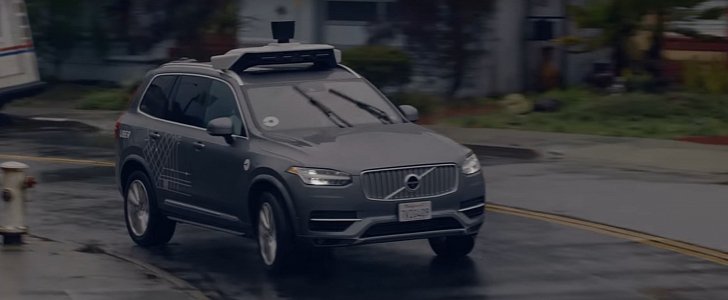Uber has been testing self-driving cars last September, but the company was not that transparent with its results.
While Google publishes a monthly report of its activities, Uber did not do the same with its autonomous prototypes. However, documents that indicate the situation have been leaked online.
The have revealed that the company’s fleet drove 20,354 miles in the autonomous mode last week, but those cars have not operated without any hiccups.
As Recode notes, Uber’s self-driving cars had their drivers step in about once every mile. This is a statistic that translates to about 20,000 interventions since these cars have begun testing.
Apparently, robots are steadily increasing the number of miles they can drive without human assistance, but drivers still need to take over the controls.
The concerning part for Uber is that there’s little progress with the figures that show what they describe as “rider experience.” The term refers to how often do their human drivers have to step in to help the vehicle operate smoothly and safely.
Uber’s self-driving vehicle fleet is comprised of 43 operating automobiles. The fleet has continuously grown since it was launched, and it appears that it has handled 1,080 rides last week in Pittsburgh and Phoenix put together.
Last week was the second time since December 2016 when Uber’s cars were driven more than 20,000 miles in a week in "driverless" mode.
The number of self-driving cars operated by Uber has seen fluctuations in the last month, as the company ran as less as 20 units in a week, while others have seen as many as 43 operating in all seven days.
According to Uber’s documents, the cars still have “critical” interventions, which mean that the driver had to step in to prevent an accident that could have ended with hitting a pedestrian or causing property damage more than $5,000.
At the same time, the fleet still has “bad experiences,” which characterize events like jerky driving, hard braking, or whatever else someone would consider uncomfortable driving.
We must note that the described events can happen in any self-driving car fleet, and they are particularly common in the early phases of testing for these automobiles.
The have revealed that the company’s fleet drove 20,354 miles in the autonomous mode last week, but those cars have not operated without any hiccups.
As Recode notes, Uber’s self-driving cars had their drivers step in about once every mile. This is a statistic that translates to about 20,000 interventions since these cars have begun testing.
Apparently, robots are steadily increasing the number of miles they can drive without human assistance, but drivers still need to take over the controls.
The concerning part for Uber is that there’s little progress with the figures that show what they describe as “rider experience.” The term refers to how often do their human drivers have to step in to help the vehicle operate smoothly and safely.
Uber’s self-driving vehicle fleet is comprised of 43 operating automobiles. The fleet has continuously grown since it was launched, and it appears that it has handled 1,080 rides last week in Pittsburgh and Phoenix put together.
Last week was the second time since December 2016 when Uber’s cars were driven more than 20,000 miles in a week in "driverless" mode.
The number of self-driving cars operated by Uber has seen fluctuations in the last month, as the company ran as less as 20 units in a week, while others have seen as many as 43 operating in all seven days.
According to Uber’s documents, the cars still have “critical” interventions, which mean that the driver had to step in to prevent an accident that could have ended with hitting a pedestrian or causing property damage more than $5,000.
At the same time, the fleet still has “bad experiences,” which characterize events like jerky driving, hard braking, or whatever else someone would consider uncomfortable driving.
We must note that the described events can happen in any self-driving car fleet, and they are particularly common in the early phases of testing for these automobiles.






